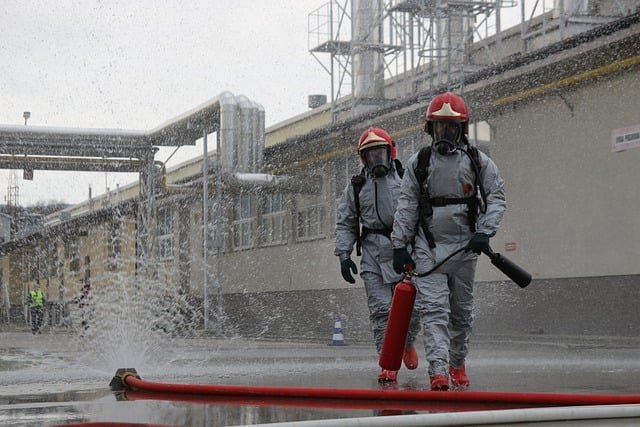Operator training frameworks for aeration system performance
Effective operator training frameworks link technical knowledge of aeration equipment with hands-on skills in airflow management, oxygenation control, effluent monitoring, and routine maintenance. Structured training reduces variability in plant performance, supports energy-efficient operation, improves reliability, and helps operators respond to diagnostics, commissioning tasks, and retrofit decisions.

Operational performance of aeration systems depends as much on operator competence as on equipment design. Training frameworks that combine classroom instruction, practical exercises, and scenario-based drills help operators understand how oxygenation targets, airflow adjustments, and effluent quality goals interact. A clear framework sets expectations for commissioning, routine maintenance, diagnostics, and responses to alarms, while also covering longer-term considerations such as retrofit planning, corrosion risks, and modular upgrades. Including basic controls literacy and cybersecurity awareness ensures operators can safely manage modern blower controls and supervisory systems without introducing new vulnerabilities. This article outlines essential training components and curriculum design elements to sustain energy efficiency, reliability, and regulatory compliance in wastewater aeration systems.
Aeration and oxygenation fundamentals
Training should begin with measurable fundamentals: how aeration and oxygenation processes affect biological treatment and effluent outcomes. Operators need to link dissolved oxygen setpoints to microbial activity and to recognize the signs of under- or over-aeration. Practical exercises can include calibrated DO probe use, interpreting oxygen transfer efficiency data, and simulating changes in load or temperature. Emphasizing the physics behind airflow distribution and transfer efficiency helps operators make informed adjustments that balance treatment performance with energy consumption.
Airflow, effluent quality, and monitoring
Hands-on modules should focus on airflow management and its direct impact on effluent quality. Trainees learn to read flow meters, interpret blower curves, and correlate airflow changes with effluent parameters such as BOD, TSS, and DO. Realistic troubleshooting labs—where operators diagnose causes of low oxygenation or uneven basin mixing—reinforce the connection between instrumentation, controls actions, and compliance outcomes. Regular practice with trending tools strengthens the ability to spot gradual performance degradation before permit excursions occur.
Diagnostics, controls, and commissioning practices
Operators must be comfortable with diagnostics and basic control logic used during commissioning and ongoing operation. Training covers alarm hierarchies, PID loop behavior, setpoint strategies, and how to verify correct actuation of blowers and valves. Commissioning scenarios give teams experience validating airflow distribution, tuning control loops for stable oxygenation, and documenting baseline performance metrics. Familiarity with diagnostic outputs from blowers and SCADA systems accelerates fault isolation and reduces downtime.
Maintenance, corrosion management, and reliability
A reliable aeration system requires clear maintenance procedures and awareness of corrosion risks. Instruction on preventative maintenance schedules, vibration and bearing checks, lubrication, and filter replacement creates consistency across shifts. Modules on material compatibility and corrosion-control practices help operators recognize early signs of degradation in piping, diffusers, and blower housings. Emphasizing condition-based maintenance and simple diagnostic checks supports long-term reliability and can reduce unscheduled repairs.
Retrofit, modularity, and energy efficiency
Training should prepare operators to participate in retrofit and modularity projects aimed at improving energy efficiency. Topics include evaluating retrofit options, understanding modular blower packages, and participating in performance testing before and after upgrades. Exercises comparing baseline and post-retrofit energy metrics, such as kWh per kg O2 transferred, teach operators how to quantify efficiency gains. Encouraging operator input during retrofit commissioning ensures that new control strategies are practical and maintainable in daily operation.
Cybersecurity, controls awareness, and safe operation
Modern aeration controls increasingly interface with plant-wide networks, making basic cybersecurity knowledge part of operator competency. Training covers secure password practices, recognizing phishing attempts that could affect SCADA access, and procedures for safe remote diagnostics. Operators should also understand physical control interlocks and manual override procedures to maintain safe operation during network outages. Integrating cybersecurity hygiene into routine shift handovers reduces the risk that digital vulnerabilities will impact aeration performance.
Conclusion
A structured operator training framework aligns process knowledge, hands-on skills, and procedural discipline to sustain aeration system performance. By covering aeration fundamentals, airflow monitoring, diagnostics, commissioning, maintenance, retrofit awareness, and cybersecurity, facilities can improve energy efficiency, protect effluent quality, and enhance reliability. Well-documented curricula and regular refresher exercises help embed best practices and create a consistent operational culture across shifts and generations of equipment.





